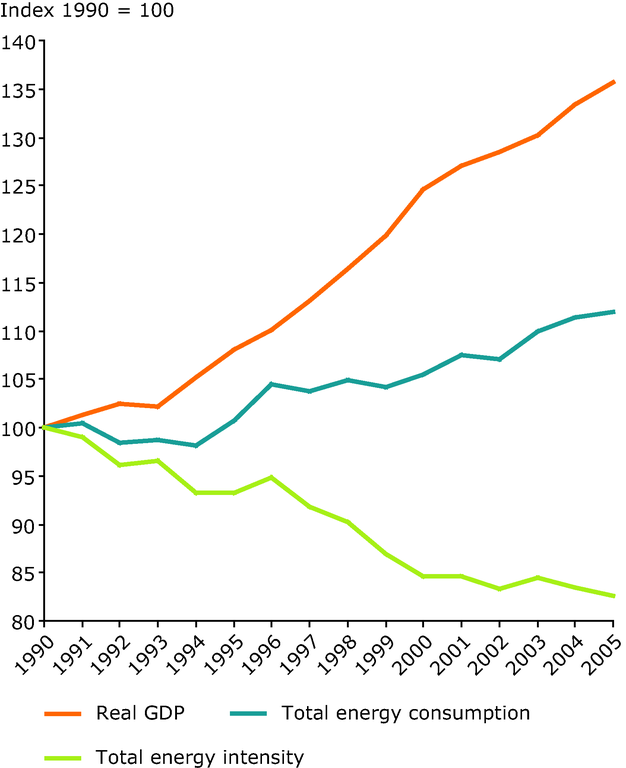All official European Union website addresses are in the europa.eu domain.
See all EU institutions and bodiesTrends in total energy intensity, gross domestic product and total energy consumption, EU-27
Chart (static)
To compute the EU27 GDP index in 1990, it was necessary to make some assumptions

- Austria
- Belgium
- Bulgaria
- Cyprus
- Czechia
- Denmark
- Estonia
- Finland
- France
- Germany
- Greece
- Hungary
- Ireland
- Italy
- Latvia
- Lithuania
- Luxembourg
- Malta
- Netherlands
- Poland
- Portugal
- Romania
- Slovakia
- Slovenia
- Spain
- Sweden
- United Kingdom
No Eurostat data were available for the new Member States: Czech Republic (1990-1994), Bulgaria (1990), Romania (1990-1998), Cyprus (1990-1994), Hungary (1990), Poland (1990-1994), Malta (1991-1998) and Germany (1990). To fill in the gaps, use was made of the European Commission's annual macroeconomic database (AMECO) as an additional data source, although this could not be done in all cases. To estimate the EU27 aggregate, the following assumptions were made: GDP in Germany in 1990 has been estimated by applying the 1990-1991 growth rate in West Germany to the 1991 GDP in Germany. The Commission's forecasts for the autumn of 2004 were used for the GDP in 1990 in Hungary. For Estonia, the GDP in 19901992 is assumed as a constant value (in real terms), the value taken was that observed in 1993. For Slovakia, the GDP in 1990-1991 is assumed to have the value of 1992. For Malta and Bulgaria, the GDP in 1990 is assumed to be equal to the GDP in 1991. These assumptions do not distort the trend observed for the GDP of the EU27 as a whole, since the latter four countries represent about 0.7 of the total GDP of the EU27.
